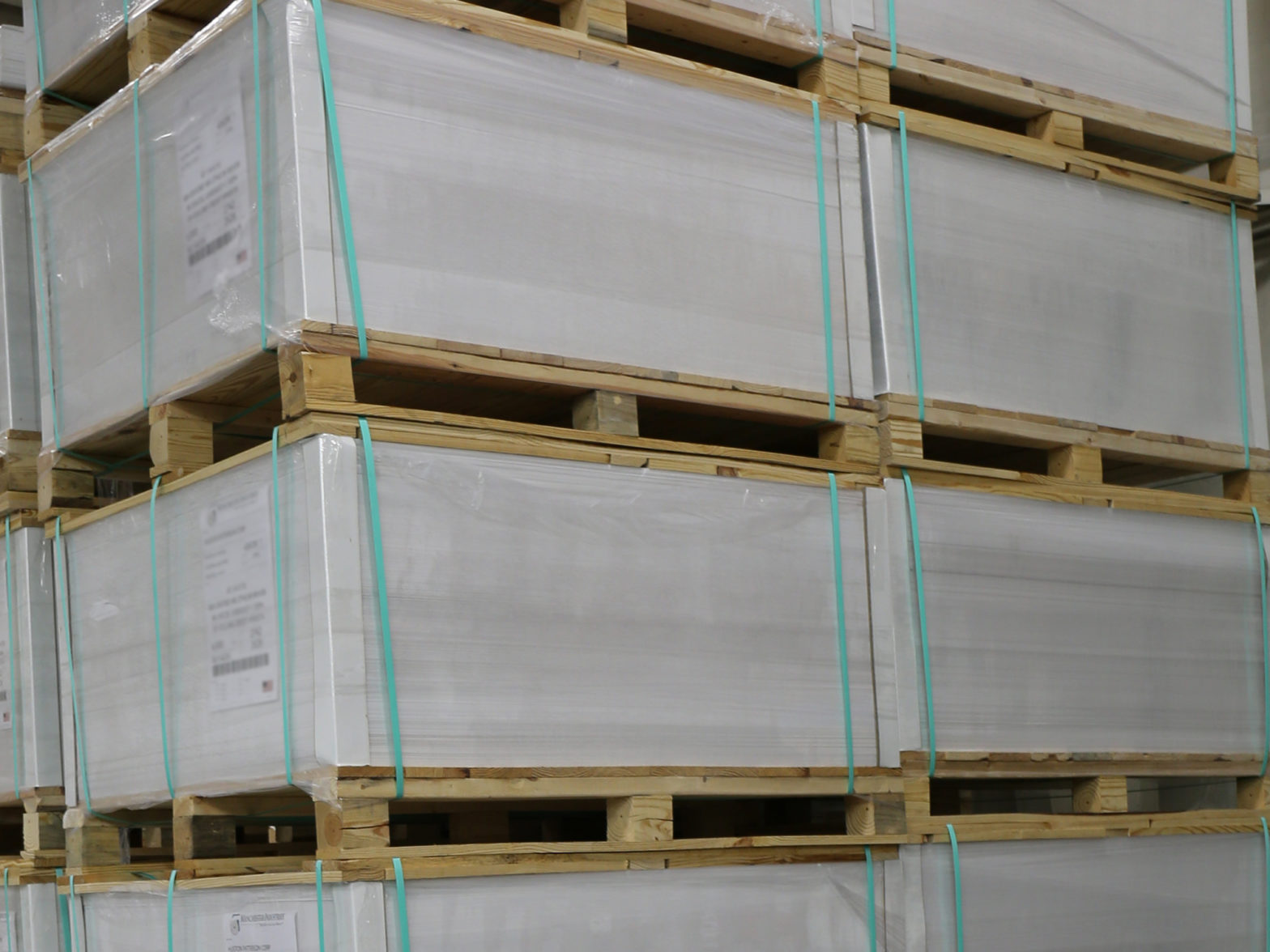Day in and day out at Huston Patterson, we are manufacturing litho labels and top sheets for our clients. There are so many details about each print run that we must control and it goes without saying, that shipping an accurate quantity is up there as an important detail on that list.
When we are running a “board” job (generally a 10pt or 12pt substrate) the sheet size is finalized prior to printing, as board jobs are sheeted to their final trim size before it gets to press. This means that when the job is printed it goes straight to quality for approval to be prepared for shipping and completely skips past our bindery. Because of this an accurate quantity must be verified by the press operator that is running the job. As the operator is moving through the initial make ready and deems that the job is within spec and accurate, they will drop the stack of make ready out of the delivery and begin running “good” sheets. At this point the operator will turn on the kick counter and keep track of the number of good sheets the press is stacking in the delivery. Once the count surpasses the order quantity the press can be shut down and the job can continue along its path through our plant, into quality assurance and then on to shipping.
Things are a little different when we run litho label jobs (70#, 80#, 95# substrates). On label jobs the sheet size that goes to press is larger than its final intended size. After the job is completed on press these sheets go to our bindery where they will be cut on all 4 sides and wrapped in stacks of 500 utilizing moisture barrier kraft wrap. In order to accurately stack the order in stacks of 500 sheets we utilize a jogging table that has an extremely accurate scale built into it. This process starts by taking 10 sheets of the order and placing them on a secondary scale next to the jogging table. The computer in the jogging table calculates what the weight of 1 single sheet would be and as the sheets are stacked on the jogging table it begins to display how many sheets have been loaded. One important thing to note is that the scale that is in the jogging table is so accurate that if one were to count out 20 sheets by hand and lay them on the jogging table it would say that there are 20 sheets loaded on the table. If just one of the sheets were removed, the counter would display that there were then 19 sheets on the table. It really is that accurate! After each stack of 500 sheets is loaded and jogged on the table, they are slid down an air glide table to the back of the cutter which will pull them through so that the cutter operator can trim the labels…and from there they are slide down another air glide table to the wrapping station where they are completely wrapped in moisture barrier wrapping and stacked on a skid. This process continues until the entire order is cut and the count needed is achieved. From there, on to shipping they go.
I hope this gave you a good understanding of how Huston Patterson controls the accuracy of order quantity throughout our process. There are somewhat crude devices that can be used to roughly calculate how many sheets are in a stack of paper or tables that can be referenced that can give you a rough estimate of how tall a stack of 100 sheets of a certain gauge of paper should measure out to be but at Huston Patterson we take an approach that leaves very little room for variance.
For more tips from me, Lee Tirey, and the Real People of HP, explore our additional blogs and videos, or contact us directly at Huston Patterson.

